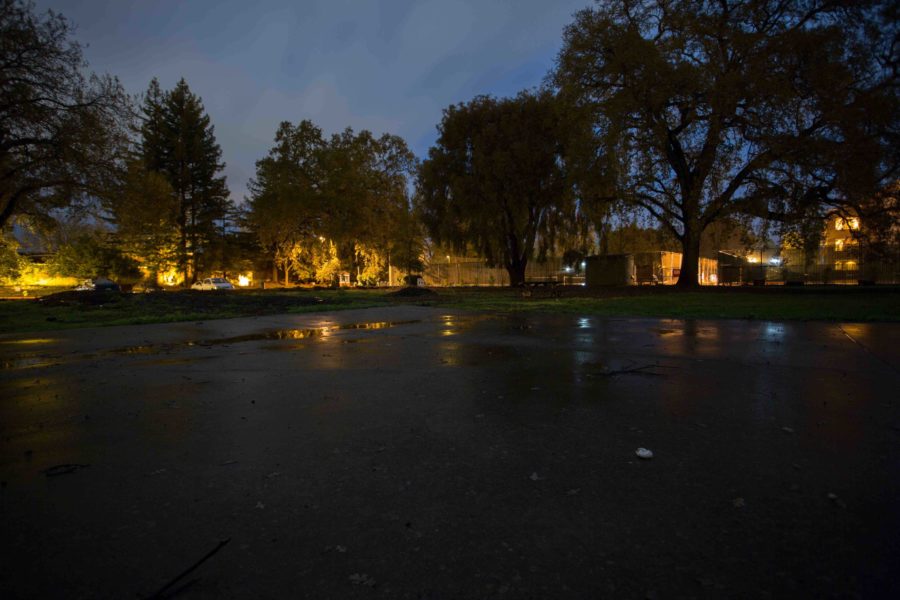Santa Rosa Junior College staff, faculty and police participated in the 2014 Fall Evening Safety Stroll across all major SRJC facilities and discovered 282 items of concern requiring attention.
“We started a couple of years ago with just a few managers from Facilities Operations. This was the first time we invited others,” said Doug Kuula, the manager of environmental health and safety.
Twenty-six others from the Santa Rosa and Petaluma campus, Public Safety Training Center, Southwest Santa Rosa Center and Shone Farm also participated in this year’s stroll.
“Last year we found about 400 items, and we only covered the Santa Rosa Campus, so the program is having a positive effect,” Kuula said.
A safety survey conducted for students discovered many concerns revolved around lighting, especially at night when students were walking to their cars or across campus.
“We were trying to come up with something that we could do to address those people’s concerns,” Kuula said. He instructed the participants to search for items such as lighting and trip hazards.
About 90 percent or more of what needs to be repaired are burned out or not functioning lights and trees that need to be trimmed to allow for more brightness for existing lights. Kuula said that there is also lighting that needs to be installed in certain areas.
A majority of lighting issues discovered were at the Santa Rosa campus, because it is the largest and oldest of the facilities.
Although Kuula did not personally verify the items found by all stroll participants, they were able to put in service requests for each item.
Aside from problems with lighting in all facilities, the stroll group also identified several trip hazards and a clogged water fountain.
Kuula predicts it will take several months to fix the lighting problems, because there are only two electricians for the entire district.
Additionally, each item does not comprise a single light bulb or light pole, but an area or building with multiple light issues. An example is a pathway with several burned out lights, which amounts to one item.
“When you put it in context, then it’s a little different,” Kuula said. “We have hundreds of acres and thousands of lights. We don’t want people to think [the electricians] are not doing their job. It’s just a big job.”
There are between 6,000 and 8,000 lights in the district, 500 of which are in the Zumwalt Parking Pavilion.
Although it’s difficult to predict how much the items will cost to fix overall, most of the concerns were maintenance issues, which can be covered under existing budgets.
Other items could be addressed as part of a bond funded project if they are in close proximity, Kuula said.


